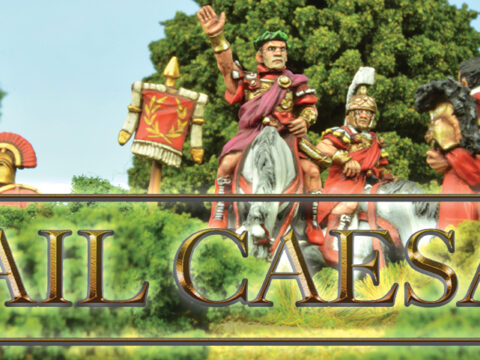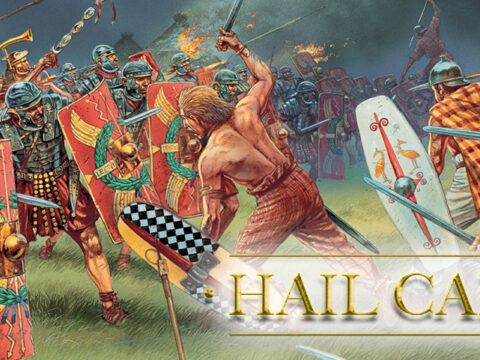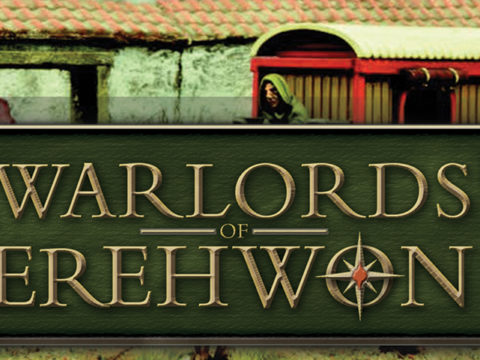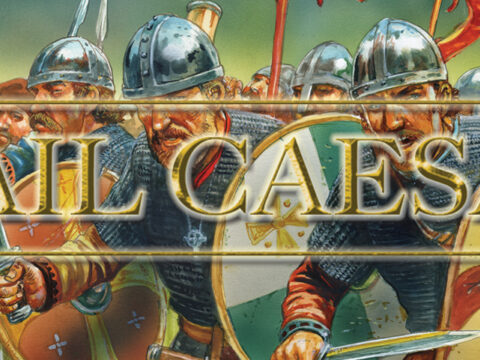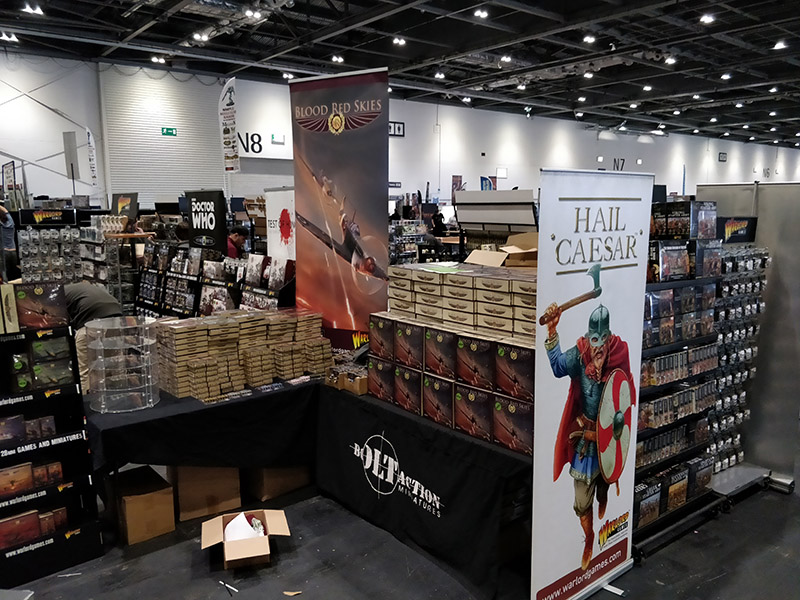by Dr. Phil Hendry (with assistance from Rick Priestley)
This article is designed to help wargamers make good use of the ‘Imperial Roman Veterans’ set from Warlord Games. It goes into some detail about the models and why they are made the way they are, contrasting them with the earlier ‘Imperial Roman Legionaries’ boxed set, as well as filling in some of the (hopefully!) interesting history that inspired Warlord to produce the models.
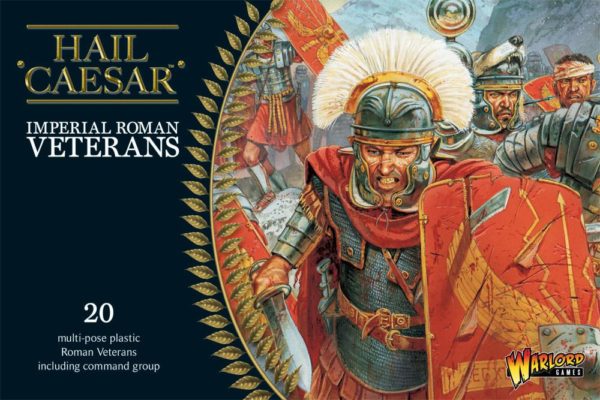
The ‘Veterans’ set consists of legionaries who have ‘got their knees brown’ (to steal a phrase from the British Army of the mid-Twentieth Century). They’ve seen a lot of action, and it shows. As well as this, they are distinctive in other ways, particularly with regard to their arms and armour.
The Romans were a curious mixture of the superstitious and the pragmatic. On the one hand, they would hardly move without taking steps to propitiate the Gods, but on the other hand, they were perfectly happy to change and adapt things to suit the situation in which they found themselves.
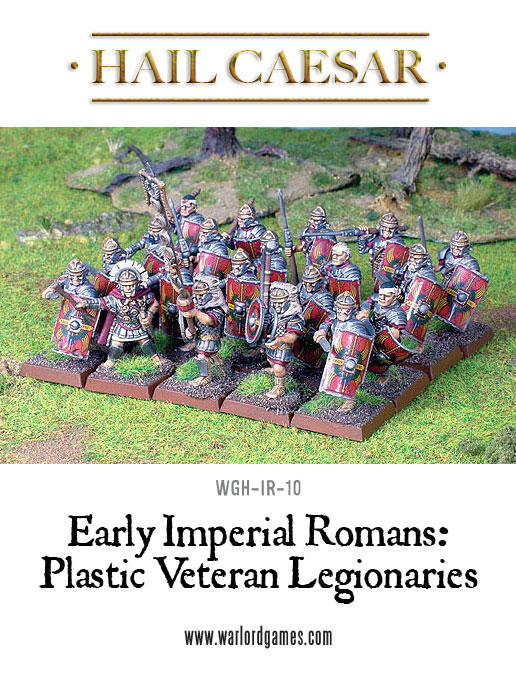
There are a lot of theories surrounding the adoption of ‘lorica segmental’ – the classic segmented armour worn by the legionaries, and as depicted by the models we’re looking at. As to which theory is true, well, who really knows, and for our purposes, who cares? Suffice it to say that it is different from the alternatives – mail (lorica hamata) or scale (lorica squamata). One ‘problem’ with the latter two armours is that though they prevent penetration, they do little to prevent bruising, or the breaking of bones, caused by heavy impacts.
If you imagine being attacked by some screaming nutter swinging a Dacian ‘falx’ (a particularly wicked-looking sort of sickle on a stick) or a Celtic long-sword, you can tell, immediately, that it’s really going to hurt if he hits you, unless you’re wearing something fairly ‘rigid’ to spread the force of the blow. The classic Roman helmet is designed to deflect blows from above. And where are they likely to hit, once deflected? Yes, you got it in one – the shoulders. So some armour which makes an especially good job of protecting the shoulders would be a good thing. If you look at lorica segmentata, you can see that the shoulders are particularly well protected against the impact of, well, pretty much anything really.
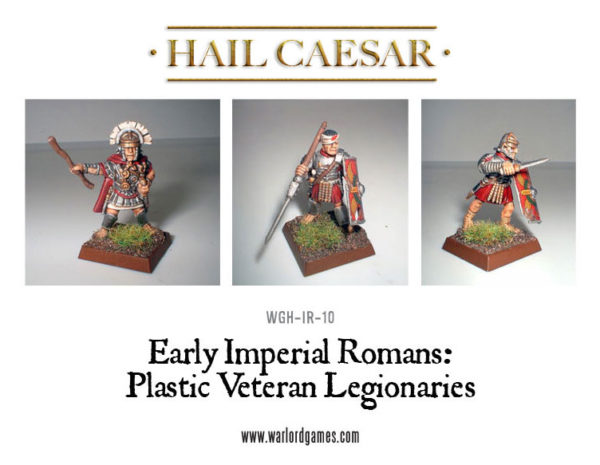
So, maybe lorica segmentata was introduced to counter such attacks. However it seems that even that may not have been enough, because a number of other innovations were introduced over time.
The ‘Veterans’ plastic boxed set introduces reinforced helmets – presumably the standard helmet was not proof against the ‘nastier’ slashing weapons, like the falx and the longsword. Of course, you could do some head-swaps between the sets – perhaps one of the legionaries from the ‘Legionaries’ set may have acquired one, perhaps off a dead man on the battlefield, or perhaps by purchase, or maybe even by getting one of the unit armourers to modify his standard helmet (it seems that Roman soldiers ‘owned’ and had to pay for, their equipment – as such much equipment ended up being decorated, and otherwise embellished).
Perhaps the most striking difference between the two sets regards the arms – all the weapon arms in the set have arm guards – manicae in Latin (singular manica). Most wargamers ‘know’ that the Roman legionaries adopted arm defences during the Dacian campaign of Trajan, possibly as a response to soldiers getting their sword-arms hacked off with the heavy two-handed flax.
However, recent discoveries of arm defences from other contexts should warn us to beware of this ‘well-known fact’. Fragments of arm defences have been found at many sites including Carlisle, Carnuntum and Newstead – the Newstead example originally having been interpreted, apparently erroneously, as a thigh-guard.
It therefore seems quite likely that manica were used more widely, and from earlier times, than was previously thought.
The Carlisle manicae are quite interesting – first of all, fragments of three (including one almost complete example) have been found, along with other bits of lorica segmentata. I had the enormous privilege of being allowed to handle one of the manicae – it was quite mind-boggling to think that the last person to use it had been a Roman soldier in action against the Ancient Britons.
It’s interesting, from a wargamer’s perspective, to consider these particular objects and their implication. They were found in the remains of a workshop, which has been dated to 125-140AD – the reign of the Emperor Hadrian, and right in the period when Hadrian’s Wall was newly built. The bits of armour have clearly been damaged in action and sent for repair. The repairs were of a crude, hurried, nature, implying, perhaps, that there was some sort of panic on, and that they were needed urgently. Given that the arm guards were found with bits of lorica segmentata, it appears that legionaries, rather than (or as well as?) auxiliaries, were involved in this fighting (auxiliaries, as far as we know, never wore lorica segmentata). The presence of these arm guards in Carlisle means, presumably, that the British Celts were seen as being just as dangerous as the infamous Dacian falx-men.
The ’Veterans’ are also equipped with greaves. Often thought to have been exclusively used by Centurions, there is plenty of sculptural evidence for their use by other soldiers – including those also using reinforced helmets and maniacae.
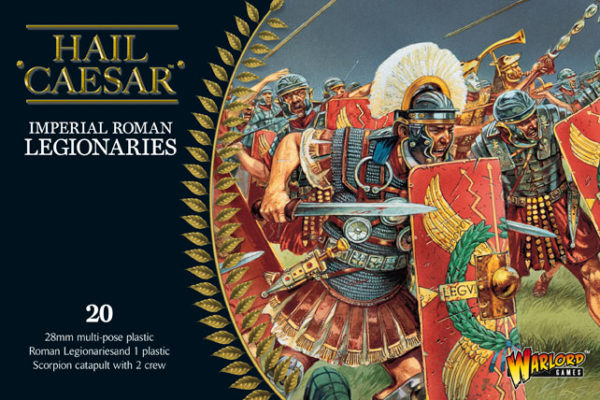
If you look closely at the models, alongside those from the ‘Legionaries’ set, you’ll notice that the swords are different. The ‘Veterans’ are equipped with the slightly later ‘Pompeii style’ sword, as contrasted with the ‘Mainz’ style sword in the legionary set. It’s an easy matter to perform ‘blade swaps’ with the aid of a scalpel and some glue, to gain even more variety in your units.
The ‘Veterans’ look somewhat ‘battered’ – with dented armour and helmets, bandages, etc, they really look as though they’ve been in a fight. Personally, I’d be inclined to treat the ‘Legionaries’ set as ‘new recruits’ (tirones in Latin) – squeaky-clean, wet-behind-the-ears new boys. The ‘Veterans’, on the other hand, are the other extreme. The vast majority of legionaries though, probably ought to be somewhere between the two, so I’d counsel ‘mix and match’ between the two sets: make up some as tirones, and a few as ‘Veterans’, but use the parts from both sets to make lots of unique poses of ‘ordinary’ soldiers – maybe one with ordinary, undamaged equipment but wearing greaves and wielding a ‘Pompeii-style’ sword; another with ordinary equipment, but a reinforced helmet and a battered-looking shield; and so on. I’d also tend to rank them up so that the better-armoured (and more battered-looking) models are at the front of the unit, with the tirones bringing up the rear.
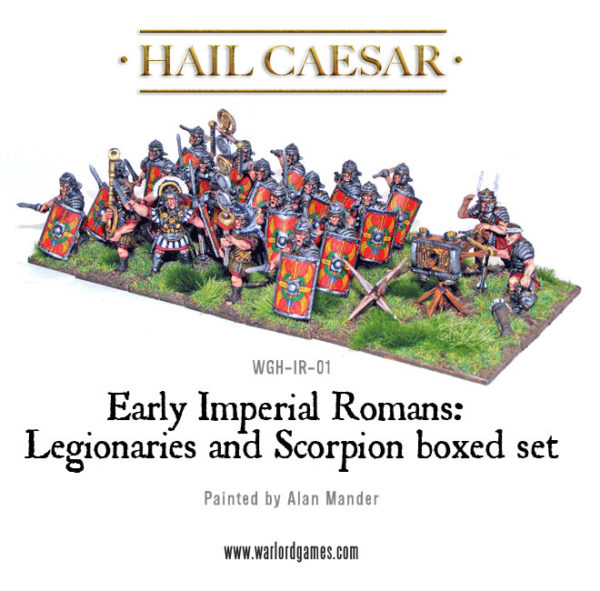
The heads for the standard-bearer and musician have bear-pelts instead of wolf-skins too – even more opportunities for ‘mix and match’.
Another thing that strikes me is that these plastic figures are cheap enough (as well as being quick and easy to paint using the Army Painter ‘Quick Shades’ dip) that you could easily make ‘morphing’ units. Simply by substituting a few figures, you could turn a unit of ‘ordinary’ legionaries into a unit of hard-bitten, hard-fighting, veterans, with the front rank equipped with all the latest ‘heavy-duty’ kit.
Grab this Veteran Army!

Or this Mega Army!


